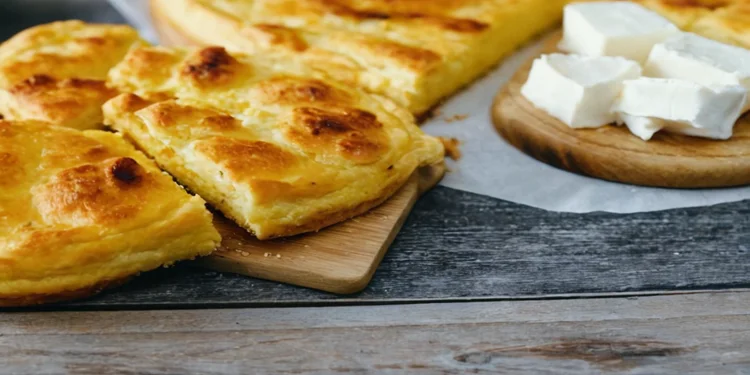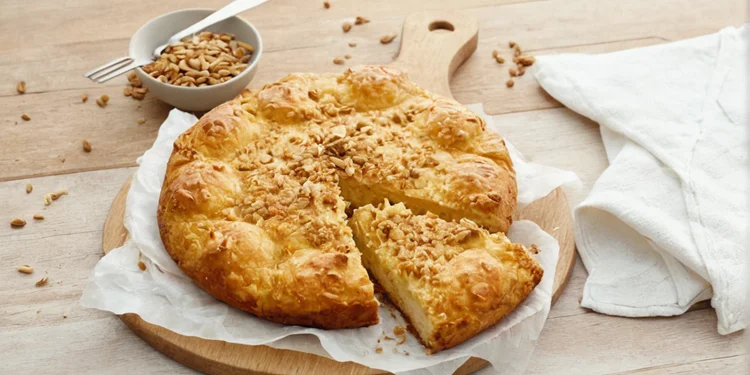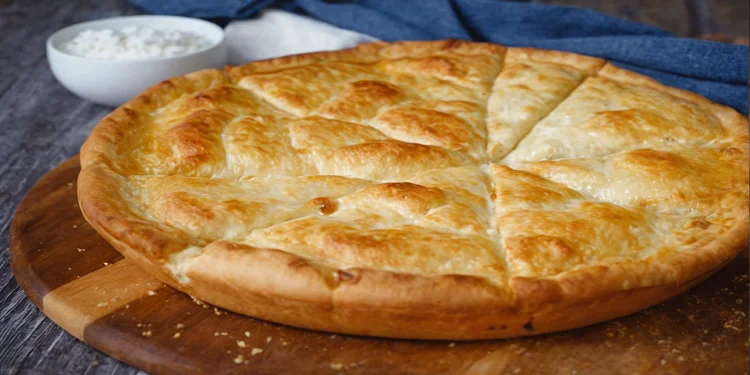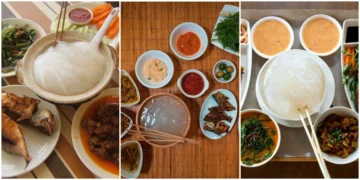Bulgaria, a country rich in ancient folklore and cultures, is known for its monasteries and rolling hills. They are equally known for their recipes, which are as diverse as their heritage. One of the most famous dishes in Bulgaria is ‘banitsa’. Banitsa is the best food of Bulgaria. The dish is essentially made of layers of crisp phyllo dough intermingled with a creamy filling of eggs and Bulgarian white cheese (sirene). By the looks of it, it appears to be just another breakfast dish but goes beyond in reflecting on the rich Bulgarian heritage. One can not eat banitsa without recalling precious festivals and homely gatherings.
Why Banista is the Best Food of Bulgaria?

The best thing about banitsa, and the reason why we love it so much, is how it manages to incorporate so many flavors together. It serves the soft, crispy, and flaky dough with a tangy filling. Every bite is an experience of our senses. Banitsa is served on most occasions. Bulgarians consider it a ritual more than a dish. It is consumed during feasts and special occasions more because it signifies good fortune and luck.
What distinguishes Banitsa is how flexible it can be. The traditional rendition has a straightforward filling comprising eggs and cheese, while other versions include additional ingredients such as spinach and leeks, as well as sweet fillings like pumpkin. This reflects the country’s regional differences and the ingenuity of the people. Banitsa is not simply eaten—it is savored and shared while being served alongside thick Bulgarian coffee or a chilled glass of ayran, elevating the dish into being an adored national cuisine.
Essential Components of Banista
The excellence of Banitsa is baked in the careful selection of high-quality ingredients, despite their small quantity. Every ingredient is important in achieving the unique flavor and texture that Banitsa is known for:
- Phyllo Dough: The ‘Banitsa’s’ signature paper-thin crisp phyllo dough is its foundation. It is layered to achieve a satisfying crunch that contrasts delicately with its filling.
- Eggs: Eggs are vital in achieving a custard-like filling and bind the ingredients together while bestowing a gentle leavening.
- Bulgarian White Cheese (Sirene): A must-have in Bulgarian kitchens, sirene is a brined cheese with a sharp and somewhat salty taste. Its addition makes the filling creamy, and with every bite, packed with characteristic flavors.
- Yogurt (Optional): To get a smoother and creamier texture, some recipes add yogurt, which further enhances the richness of the dish.
- Butter or Oil: Fat ensures the pastry browns and becomes crispy by using either butter or oil to brush the phyllo dough layers.
- Additional Flavors: The classic recipe is quite simple; however, other versions may add spinach, leeks or other herbs to accent the dish with gentle aromatic hints, depending on what is in season and the local customs.
Every ingredient is chosen to respect the traditions of Banitsa while simultaneously providing a blend of textures and tastes that the dish is known for.
Preparation of Banista (Best Food of Bulgaria)

Preparing the Filling: The work begins with the whisking of eggs alongside sirene into a delectable paste. In many households, a little bit of yogurt is used to give the filling more flavor. Achieving the right balance in the flavor profile requires an equilibrium between the egg’s fluffiness and the cheese’s saltiness.
Layering the Phyllo Dough: Prepare the phyllo dough by first warming a tray with some oil, while preparing the butter. The dough is then covered with a damp cloth to prevent drying. After this step is done, the tray is prepared with some cheese and eggs for later use. Now the brisk butter is applied on top of the dough, which is followed by bursting it into numerous parts. These parts are then baked at a temperature of around 380°F for around 40 minutes. Voila, the crispy golden brown pieces of pure heaven, Banitsa, is your treat that can be enjoyed throughout the day.
Baking: The remaining pieces of dough can be split into even more by putting them in bags. Cover the dough with a few layers of clothes, while taking it somewhere war,m around 400F. Banitsa can be preserved for a long time while adding additional taste after drying out.
Serving: Another way of enhancing this pancake-like goodness is to include some granulated sugar and chocolate to add sweetness and soften the edges of the crispy skirt that expands with the combination of the other ingredients.
Withstands incredible precision and control, fully enveloping the remnants of this dish with the diverse exquisite flavors retrieved from Bulgaria, combined with copy hovering over sand blend marks the ingenious idea that can feed up to a dozen while also celebrating the magnificently hued layers of phyllo dough curled by with Bananpalt off.
What Makes Banitsa Unique?
Banitsa stands out for a number of reasons. Its unpretentious ingredients are worked into an amazingly intricate process that captures the interplay between soft versus crisp or savory against tangy. Unlike many pastries that depend on sophisticated flavor interplay, Banitsa charms patrons with simplicity. This speaks to the Bulgarian philosophy of food, which places tradition and quality above all else.
In addition, sharing Banitsa Platter with family and friends brings out its communal nature. It is a dish that unites people during festive occasions, or even a family breakfast and shows strong ties in Bulgarian culture. Sharing Banitsa epitomizes warmth, hospitality, and the unyielding essence of community that characterizes Bulgaria.
History of Banista (Best Food of Bulgaria)

Banitsa’s history contains a wealth of information about Bulgarian traditions. Its Bulgarian roots lie at the very core of the peasant’s way of life. Traditionally, Banitsa served as a way to make use of simple ingredients to prepare and cook food. Banitsa is made from readily available ingredients such as eggs, local cheese, and flour-based phyllo dough. It has undergone significant transformation over the years and is now considered a staple during celebratory feasts and religious holidays.
The evolution of Banitsa reflects the historical and cultural journey of Bulgaria—situated at a crossroads of invasion and revolution, this place never loses touch with its roots. Nowadays, Banitsa is consumed as a daily comfort food, but it simultaneously evokes nostalgic pride; it functions as a representation of Bulgarian resilience and identity.
Other Authentic Bulgarian Delicacies
Banitsa occupies a special place in the heart of Bulgarian cuisine, but there are many other delicious dishes showcasing the country’s diverse culinary treasures:
- Shopska Salad: Comprising tomatoes, cucumbers, onions, and peppers, this dish, garnished with Sirene cheese, captures the essence of Bulgarian produce.
- Kebapche: This barbecued dish is made from minced meat seasoned with a unique blend of spices. It is popularly sold as street food and served at family gatherings.
- Tarator: Refreshing in nature, this dish is a cold soup made from yogurt, cucumbers, garlic, and dill. It is ideal for the hot days of summer.
- Bob Chorba: This dish is a bean soup that has a hearty flavor. It represents the rugged and rustic nature of Bulgarian village cooking.
- Lyutenitsa: Often served as a shared dish or an appetizer, this vegetable spread is made from peppers, eggplant, and tomato. It is widely enjoyed for its rich flavors.











Discussion about this post